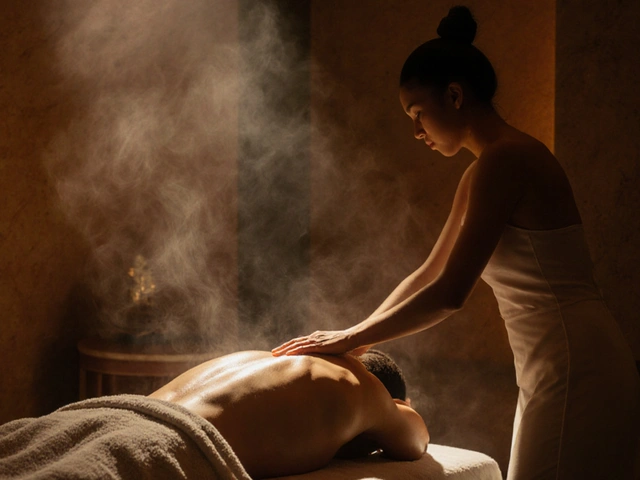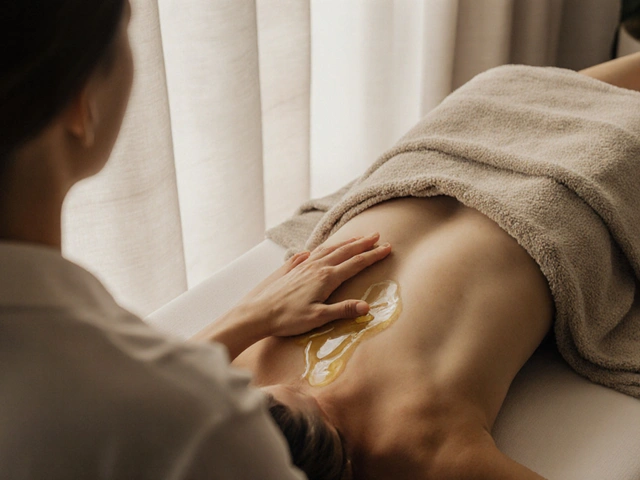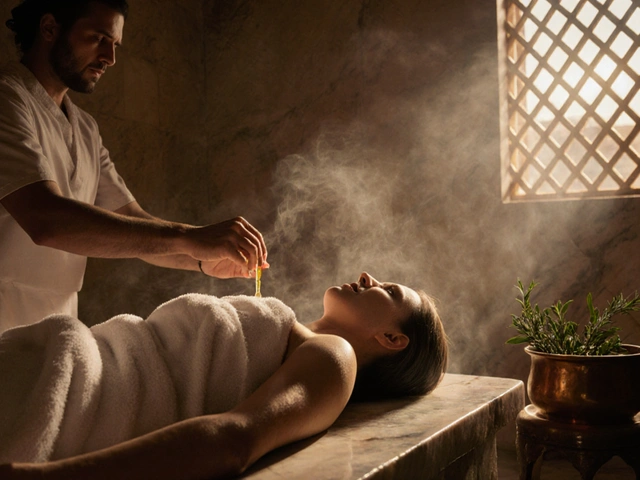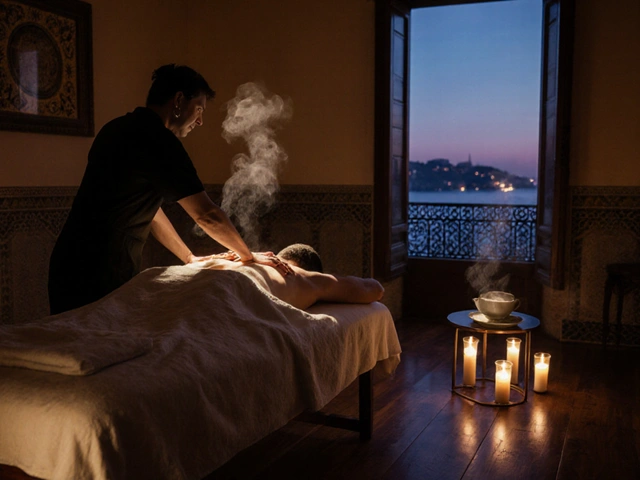Think about the last time you walked out of a spa feeling like a brand new human. That’s what a good Thai massage can do for you, but only if you know how to prep and what to look for. You don’t have to be a massage expert—or fly all the way to Bangkok—to enjoy the real deal. The right approach makes all the difference.
First things first: show up a few minutes early. Sounds simple, but running late means you’ll start your session already stressed. Leave your phone on silent, grab a bottle of water, and wear comfy clothes that are easy to change out of. Trust me, you’ll thank yourself later.
Thai massage isn’t your typical rub-and-go spa treatment. It’s more like yoga meets pressure point therapy. You’ll be stretched, compressed, and gently pulled. Some people even compare it to having someone do yoga to you. If you’re nervous about any moves or have injuries, just mention them before your session starts. A good practitioner will always adjust to your needs.
- Key Tips for a Great Thai Massage
- Understanding Thai Massage and Its Benefits
- Choosing the Right Thai Massage Therapist
- Maximizing Your Massage Experience
Key Tips for a Great Thai Massage
If you want your thai massage to be not just good but great, there are a few things you really shouldn’t skip. A little planning before and after your session goes a long way, so here’s what actually matters:
- Hydrate before and after: Drink a glass of water about 30 minutes before your appointment and definitely follow up with more afterward. Thai massage helps flush out toxins, and staying hydrated helps your body recover and feel less sore.
- Don’t eat a heavy meal: Showing up super full means you’ll be uncomfortable when all that pressing and stretching starts. A light snack is fine, but skip the big lunch an hour before your session.
- Communicate boundaries: If you have any injuries, sore spots, or just don’t like a certain stretch, speak up before the session starts. Practitioners expect this, and good ones will always respect your comfort level.
- Dress right: Lots of spas will give you loose pants and a shirt, but if you aren’t sure, bring your own lightweight, stretchy clothes. Think yoga gear, not jeans.
- Avoid fragrances and heavy products: Skip strong perfumes, lotions, or oils before you go. Practitioners often work close to you and strong scents can be distracting for everyone.
- Arrive early and unplug: Give yourself five to ten minutes before your appointment to relax, silence your phone, and get in the right headspace. No rushing means you start off calm, not frazzled.
To get a sense of how real people prep for Thai massage, check out this table based on feedback from massage therapists at three busy wellness centers:
| Tip | Why It Matters | Reported Impact (%) |
|---|---|---|
| Hydration | Reduces post-massage soreness | 90% |
| Light meal before session | Less discomfort during moves | 81% |
| Clear communication | Helps customize session | 88% |
| Dressing comfortably | Makes stretching easier | 95% |
| Unplug/disconnect | Deeper relaxation | 85% |
It’s clear the basics work—most regulars swear by hydrating, showing up early, and simply letting their therapist know what they need. These little tweaks can easily turn a decent session into a great one.
Understanding Thai Massage and Its Benefits
If you’ve ever wondered why Thai massage is so different from a regular spa day, it really comes down to the method. Unlike most Western massages, Thai massage has been around for more than 2,500 years, rooted in traditional Thai medicine and influenced by Ayurveda and Chinese healing techniques. No oils or lotions here—just comfortable clothes and a mat on the floor. The massage follows your body’s energy lines (called "Sen" lines in Thailand), using slow movements, gentle pressure, and stretching.
Here’s what really sets a thai massage apart: therapists use not just their hands, but also their knees, elbows, and even feet. You might find yourself in positions that feel a lot like assisted yoga. That’s not a bug, it’s a feature! The goal is to loosen tight joints, boost flexibility, and get your body’s energy flowing. You’re never just lying around—expect to be moved, stretched, and sometimes gently rocked.
The health perks aren’t just hype. In 2015, researchers at the University of California, Irvine, published a study showing Thai massage lowers fatigue and increases energy more than Swedish massage. Other studies found it helps reduce back and joint pain, especially for people who sit at computers all day or hit the gym hard. It’s even shown to help with headaches and anxiety.
- Reduces Muscle Tension: Helps work out those stubborn knots and tight spots—perfect for anyone with a desk job or an active lifestyle.
- Boosts Flexibility: All that stretching isn’t just for show; it can help you move better in everyday life.
- Improves Circulation: The pressure and movement get your blood flowing, leaving you feeling refreshed instead of groggy.
- Relieves Stress: Thai massage isn’t just good for your body—it can really help clear your mind too.
- Increases Energy: Many people walk out feeling recharged, not sleepy.
| Benefit | How It Helps |
|---|---|
| Pain Relief | Targets sore muscles and joints for real improvement, not just short-term relief |
| Better Sleep | Massage relaxes the body and lowers tension, making it easier to sleep at night |
| Improved Flexibility | Keeps your body moving smoothly, even if you aren’t that active |
| Stress Reduction | Helps lower anxiety, making everything else feel a bit more manageable |
So, next time you hear someone rave about their Thai massage session, you’ll know it’s not just relaxation—it’s a full-body tune-up. Whether you’re aching after a long week or want to get ahead with some real self-care, Thai massage offers benefits that last way beyond your time on the mat.

Choosing the Right Thai Massage Therapist
It’s tempting to just pick the first place you find online, but when it comes to getting a thai massage, your therapist matters more than you think. The best therapists blend skill, experience, and a knack for making you feel at ease. Here’s what you really need to look out for.
Start by checking credentials. In Thailand, and increasingly in other countries, top therapists are certified through programs like Thailand’s Ministry of Public Health or the Wat Pho Thai Traditional Medical and Massage School. If you see certificates from these or similar organizations, you’re on the right track. For numbers, about 70% of reputable Thai massage therapists outside Thailand have gone through some formal training, so don’t be shy about asking.
- Read reviews on Google or TripAdvisor, but look for detailed stories—not just star ratings. Comments about communication, cleanliness, and how safe clients felt matter most.
- If friends or colleagues are massage fans, grab their recommendations. Word of mouth is still gold.
- Don’t get hung up on price. Cheaper isn’t always better, and a solid therapist knows what their service is worth.
When you call or email a massage clinic, notice how they answer your questions. If they’re vague about who will see you or where they trained, take that as a red flag. Most professionals are happy to chat about their approach, experience, and what to expect if you’re a first-timer.
| Therapist Quality | What to Look For | Why it Matters |
|---|---|---|
| Proper Certification | Training from accredited schools (like Wat Pho) | Guarantees a safe, effective experience |
| Years of Experience | 3+ years in Thai massage practice | More skilled in handling needs and concerns |
| Client Reviews | Consistent, recent, detailed reviews | Shows reliability, and genuine results |
One last tip: trust your gut. If a place feels off—maybe it looks unclean or the staff seem rushed—walk away. The right therapist makes you feel relaxed even before your session starts, and that’s half the magic right there.
Maximizing Your Massage Experience
If you want your thai massage to actually do its job, you need a strategy. It’s not just about lying on the mat and hoping for the best. Here’s a breakdown of things you can do before, during, and after your session to really get the most benefit.
- Be super clear about what you want. If there’s an area that feels tense or a spot you want them to avoid, just say so. It’s not rude—it helps the therapist adjust the treatment.
- Stay relaxed and breathe. When you tense up or hold your breath, you make the stretches harder. Thai practitioners will remind you, but try to breathe out during the big stretches. It actually makes it easier for your muscles to let go.
- Dress right. Most Thai spas give you loose pants and a shirt to change into, but if you’re going to a place that doesn’t, wear your comfiest activewear. Leave the jewelry at home; chunky accessories just get in the way.
- Hydrate after the massage. You might not think you need to, but experts say just like after a workout, your body flushes out waste. Water helps you recover faster and stops you from feeling sore the next day.
- Don’t rush out. Give yourself at least 10-15 minutes to chill before heading back to reality. The endorphin boost is real, and if you’re not in a hurry, you’ll walk out with even more of that peaceful feeling.
If you really want to geek out, here’s a quick look at how often people get massages and why it matters:
| Frequency | Benefits Reported |
|---|---|
| Once a month | Better sleep, less stress, minor pain relief |
| Twice a month | Improved flexibility, less muscle soreness |
| Weekly | Chronic pain relief, overall mood boost, noticeable improvement in energy |
One last tip: talk to your therapist if you’re brand new. Many experienced practitioners love answering questions and have all sorts of small tricks to help you get comfortable. They can change the intensity or focus, making the session work for your body. That way, every time you book a Thai massage, you get real results—less stress, fewer aches, and a better mood.





